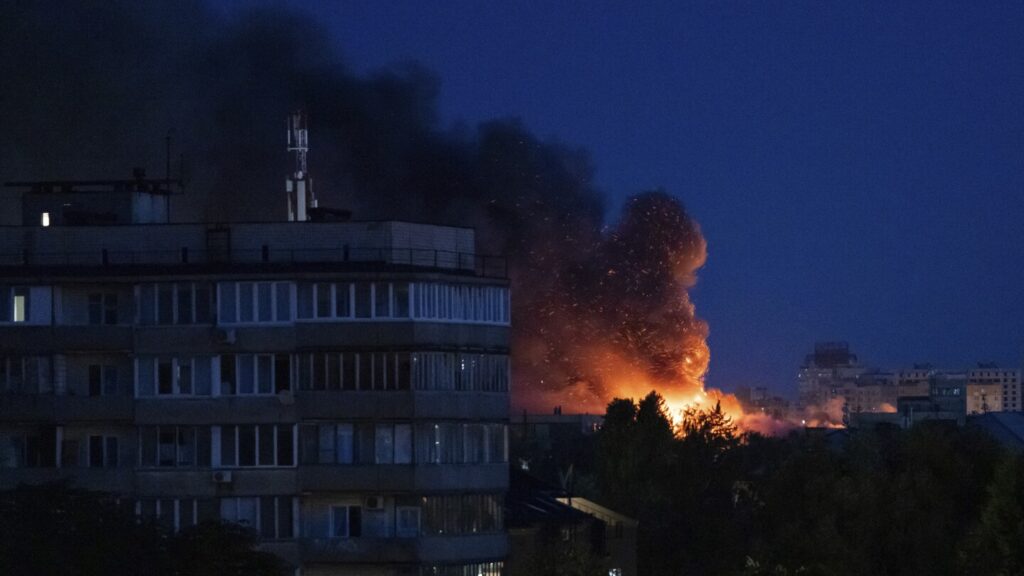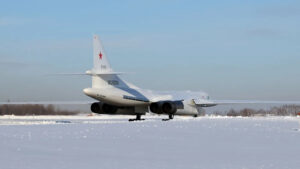
WASHINGTON (AP) — The United States has paused certain shipments of weapons to Ukraine, citing concerns over declining U.S. stockpiles. This decision, announced on Tuesday, marks a significant shift in U.S. policy as Ukraine faces intensified attacks from Russia.
The Biden administration had previously pledged these munitions to bolster Ukraine’s defenses in its ongoing conflict with Russia, now entering its fourth year. However, a recent review by the Defense Department under the Trump administration has prompted a reevaluation of priorities, leading to this pause.
“This decision was made to put America’s interests first following a review of our nation’s military support and assistance to other countries across the globe,” stated White House spokesperson Anna Kelly. She emphasized that the strength of the U.S. Armed Forces remains robust, referencing recent U.S. missile strikes in Iran as evidence.
Pentagon’s Assessment of Weapon Stockpiles
The Pentagon’s review revealed that U.S. stockpiles of certain weapons were too low, prompting the halt of pending shipments, according to an anonymous U.S. official. The specific weapons affected by this decision have not been disclosed by the Defense Department.
“America’s military has never been more ready and more capable,” said Pentagon spokesman Sean Parnell. He highlighted that the ongoing major tax cut and spending package in Congress aims to modernize U.S. weapons and defense systems to counter 21st-century threats.
Impact on Ukraine Amid Escalating Russian Attacks
The suspension of some U.S. weapons is a setback for Ukraine, especially as Russia has recently launched some of its most significant aerial attacks of the war. These developments have further complicated peace efforts, which have seen little progress.
The U.S. has been a major supporter of Ukraine, providing over $66 billion in military assistance since Russia’s invasion in February 2022. Despite this, the U.S. has consistently urged its allies to contribute air defense systems to Ukraine. However, many nations, particularly in Eastern Europe, are hesitant to part with these high-tech systems due to their own security concerns.
Shifts in U.S. Military Aid Policy
Elbridge Colby, the Defense Department undersecretary for policy, stated that the department continues to offer President Trump a range of options to maintain military aid to Ukraine. This is in line with Trump’s goal of ending the conflict.
“At the same time, the department is rigorously examining and adapting its approach to achieving this objective while also preserving U.S. forces’ readiness for Administration defense priorities,” Colby explained.
During a recent NATO summit, Trump met with Ukrainian leader Volodymyr Zelenskyy and discussed the potential provision of additional U.S.-made Patriot air defense missile systems to Ukraine. Trump acknowledged the effectiveness of these systems, which are also supplied to Israel.
Administration’s Evolving Stance on Ukraine Aid
These discussions reflect a broader shift in the administration’s approach to military aid for Ukraine. In June, Defense Secretary Pete Hegseth testified before lawmakers about redirecting funds to align with Trump’s primary objectives.
Hegseth emphasized the importance of a negotiated peace between Russia and Ukraine, suggesting that it would strengthen America’s global standing. He also noted that the defense budget reflects the necessity for Europe to take greater responsibility for its defense.
The change in policy comes after Hegseth’s absence from a key international meeting on military aid to Ukraine, a group established by his predecessor, Lloyd Austin. This marked the first time a U.S. defense secretary did not attend the meeting, signaling a shift in U.S. leadership in the group.
As the situation evolves, the U.S. continues to balance its strategic interests with its commitments to international allies and partners. The decision to halt certain weapon shipments to Ukraine underscores the complexities of global military support and the ongoing reassessment of U.S. defense priorities.






